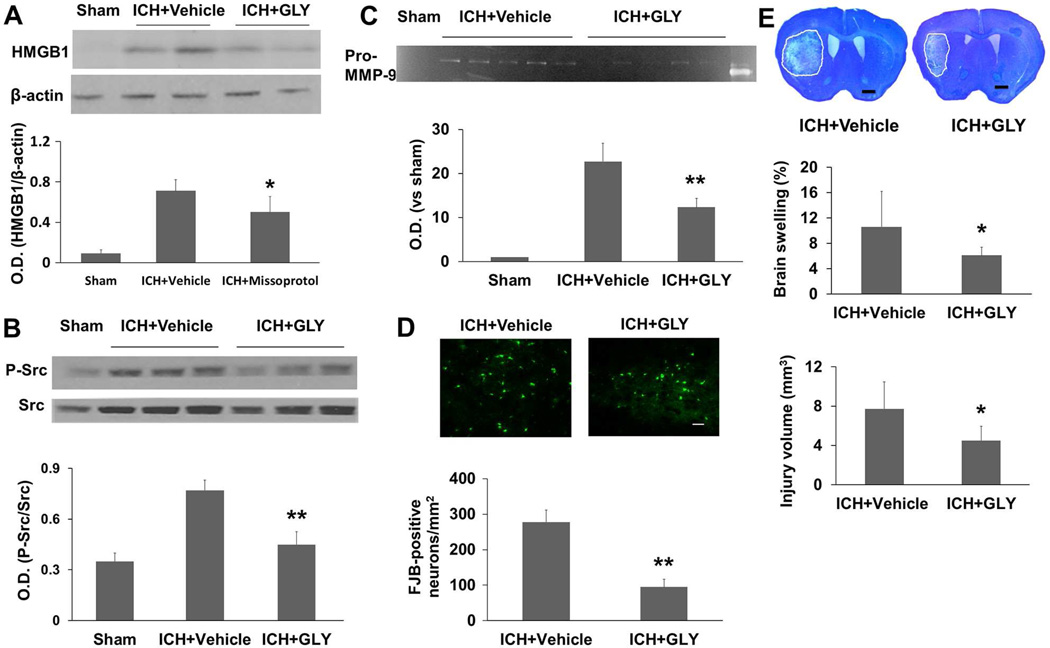Fig. 8.
HMGB1 inhibition with glycyrrhizin (GLY) is protective in the collagenase-induced ICH model. Western blot analysis showed that glycyrrhizin treatment reduced immunoreactivity of HMGB1 (A) and phosphorylated (P−) Src (B) on day 1 after ICH (n=5 mice/group). (C) Gelatin gel zymography analysis showed that glycyrrhizin treatment reduced the activity of pro-MMP-9 on day 1 after ICH (n=5 mice/group). (D) Glycyrrhizin treatment reduced the number of Fluoro-Jade B (FJB)-positive cells in the perihematomal region on day 3 after ICH (n=8 mice/group). Scale bar = 30 µm. (E) Histologic staining with Luxol fast blue/Cresyl Violet showed that glycyrrhizin treatment decreased brain swelling by 42.5% and lesion volume by 41.8% on day 3 after ICH (n=8 mice/group). O.D., optical density. All values are means ± SD; *p<0.05, **p<0.01, t-test.

